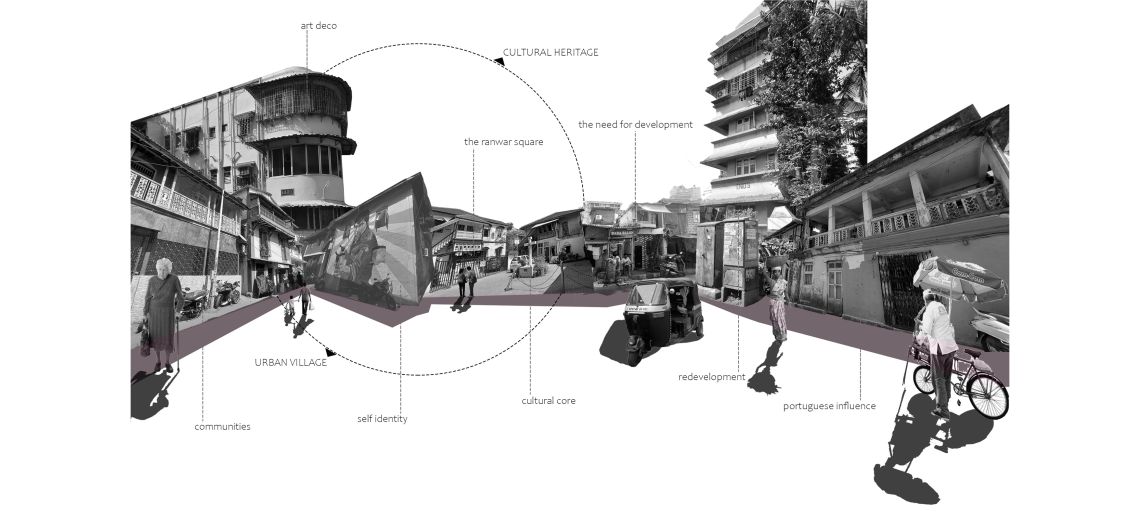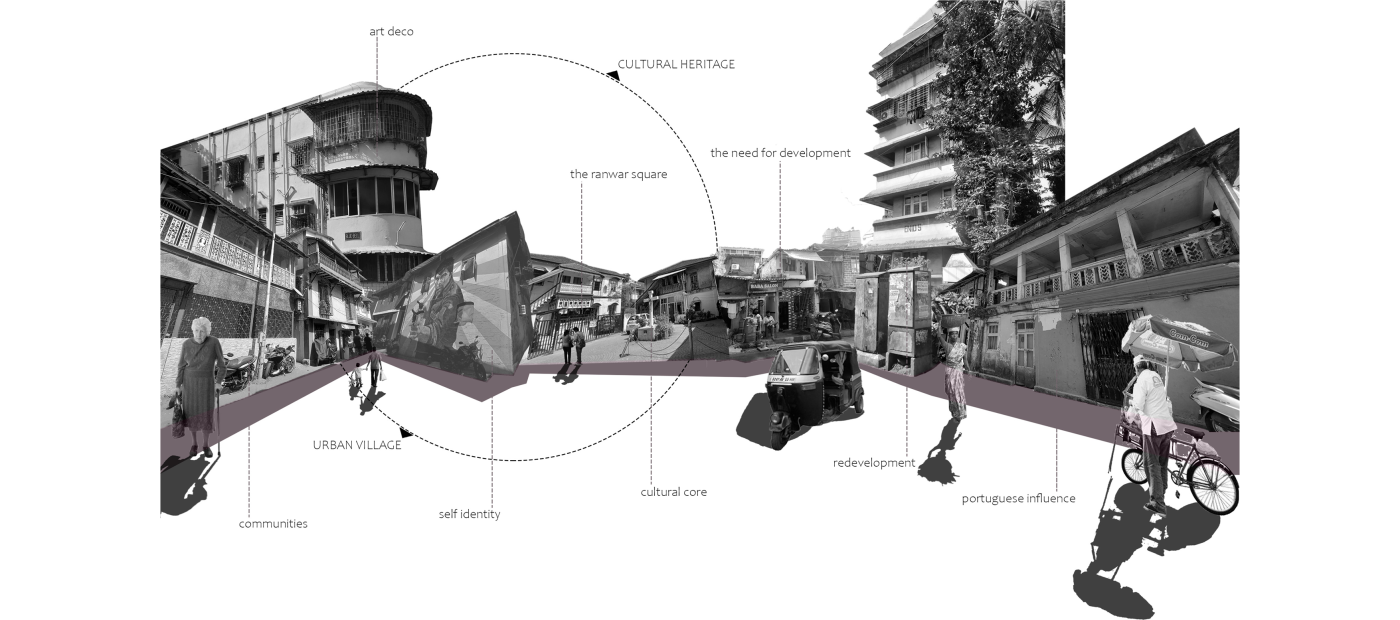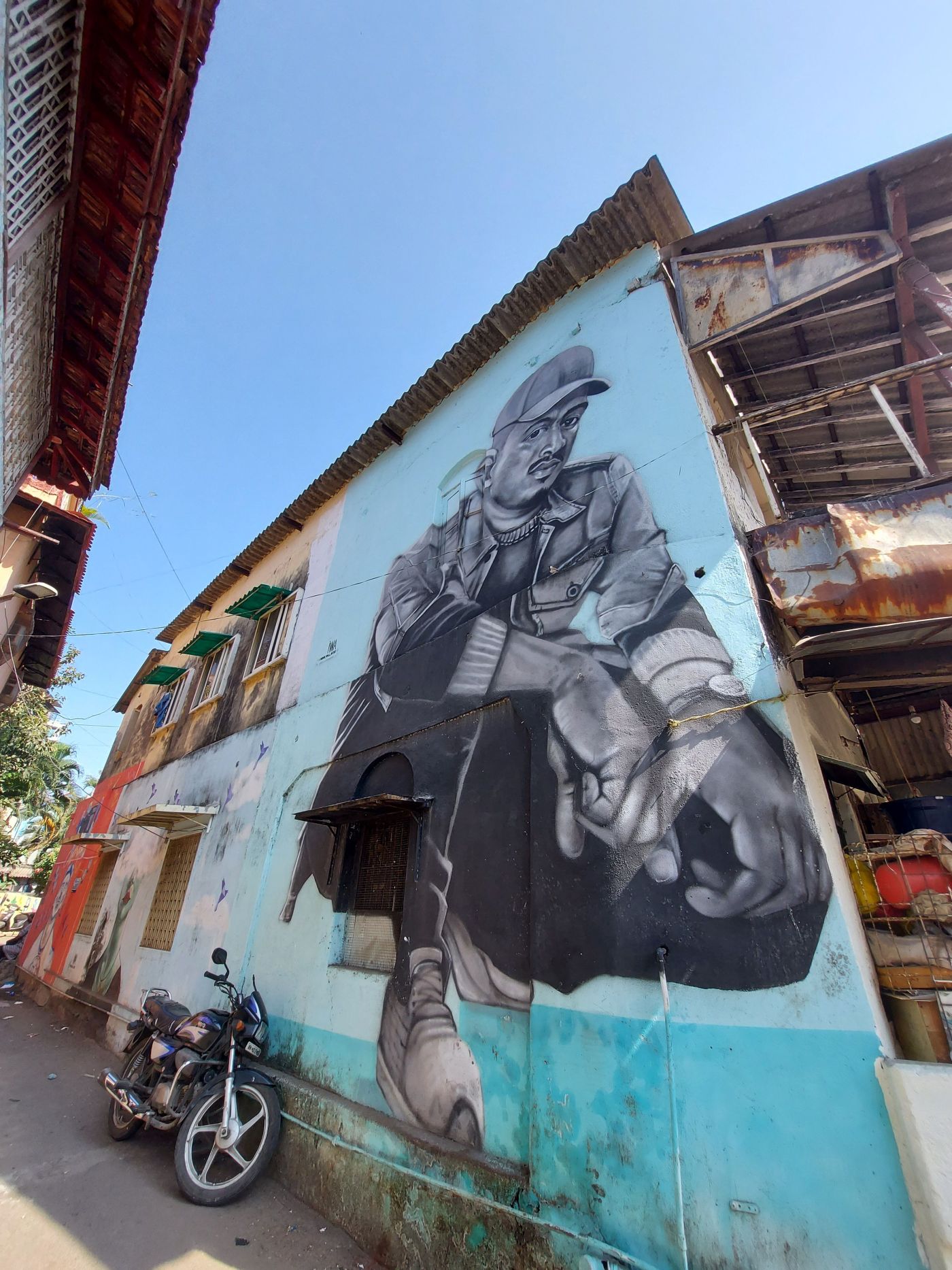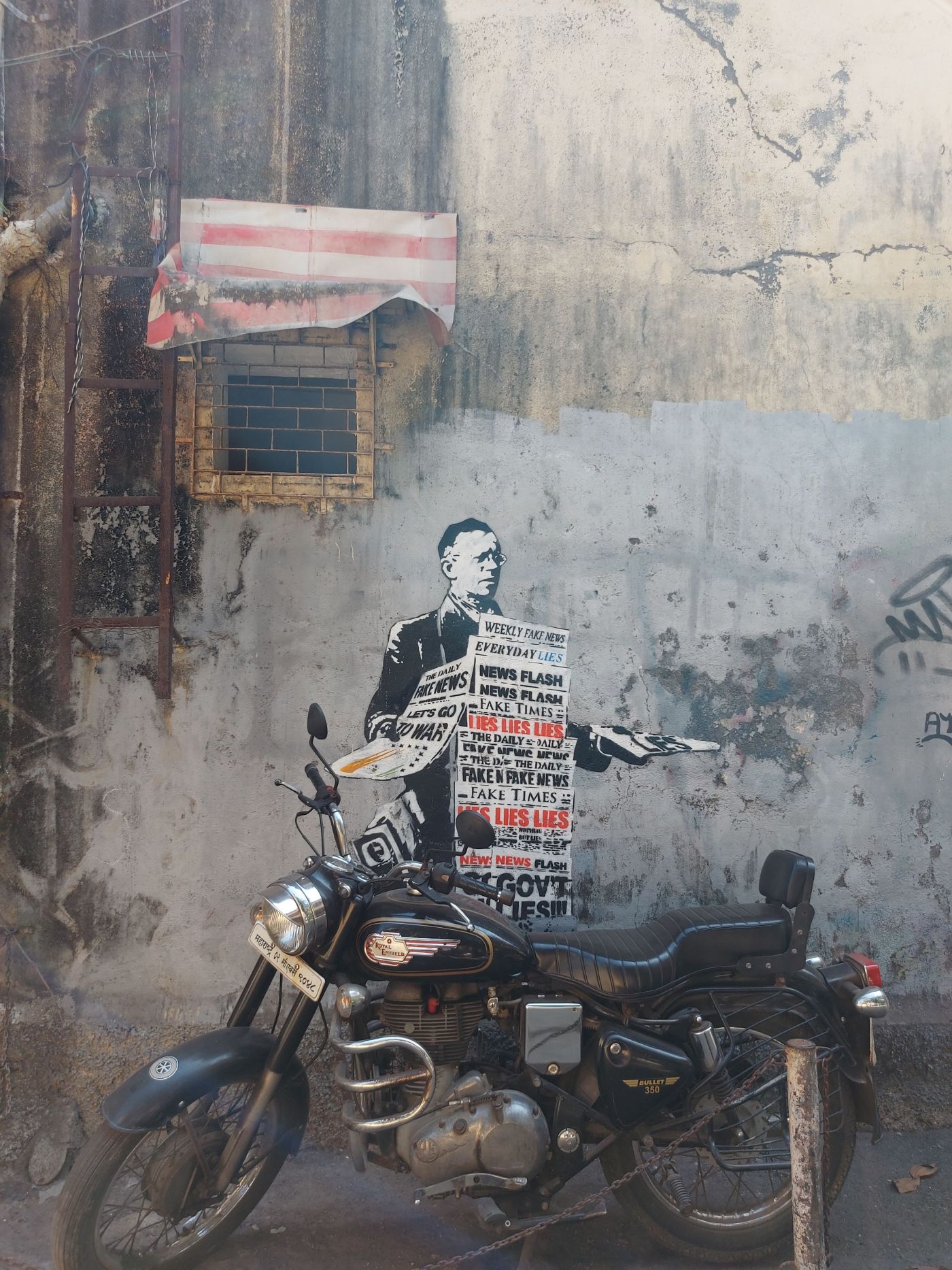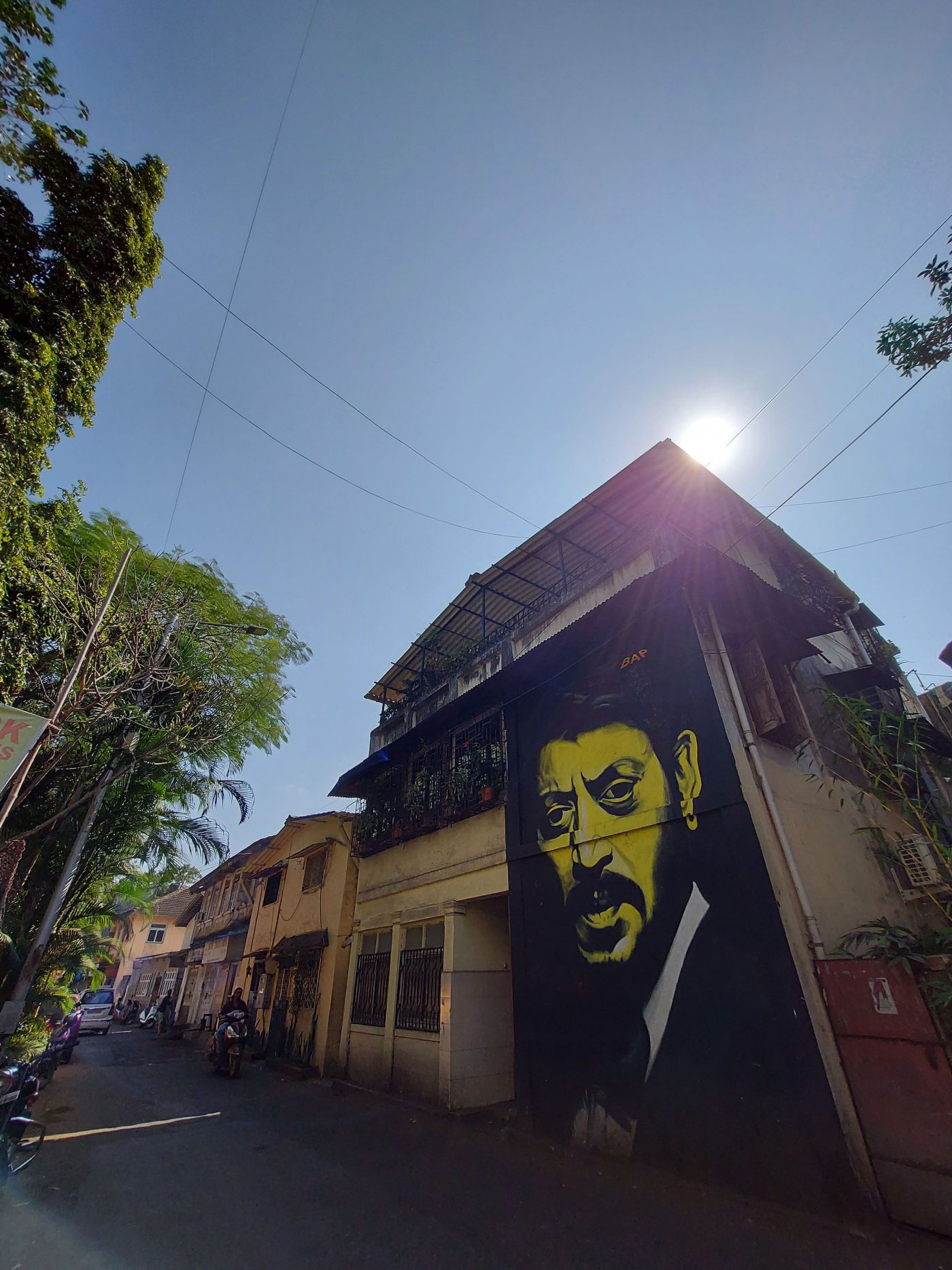Ranwar - Mumbai's Homegrown Urban Village

Ranwar - Mumbai's Homegrown Urban Village
To understand more about Homegrown villages and communities of Mumbai, we visited Ranwar village. It is an old colonial neighbourhood, dating back to the eighteenth-century. The village is in Bandra, located between Mt. Carmel road and Hill road, adjacent to Chimbai village. It has a strategic edge in terms of its accessibility, while allowing for an escape from the bustle of city life.
The village has a cosmopolitan demographic, with varied occupations and eclectic lifestyles. The quaint streets are lined by vibrant houses fashioned in wood and stone. One may find a group of elderly men chatting behind newspapers and homemakers hand-picking fruits and vegetables from the carts.
Ranwar’s neighbourhood consists of around 42 houses with a population of approximately four hundred residents. The streets and houses have names like Hill Road and Veronica Street reflecting the local social history. Black boards indicate the names of the owners of the house, most of whom belong to the ‘East Indian’ community. Considered to be Mumbai’s original residents, their rich culture with a strong Portuguese influence is passed on from generation to generation. This is starkly visible in the joyous celebrations of Christmas with several tableaus erected on every nook and corner of the village, adorned in gleaming lights. There are also shrines built in memory of loved ones who are said to keep the evil eye out of the village.
St. Andrew’s Church is a prominent landmark and an integral part of the life of the village. Jude’s bakery, known for its bread and the striking graffiti wall acts as a gateway to the village. Just like Dharavi Koliwada and other urban villages of Mumbai, Ranwar is also a communitarian village.
The proportions and spatial logic of the village developed according to weather, functionality and human activities. The typology of habitation varies from cottage-style houses, bungalows to informal settlements in the inner parts of the village.
Ranwar, on the other hand, is a ‘Gaothan’ area where most of the houses belong to single-family East Indians. The houses in contrast to Dharavi are quite spacious and require no expansion. The people residing here are mostly white-collar employees who need not rely on their place of residence for income generation.
Ranwar is traditionally a residential settlement that has gained the title of being heritage over time. As seasons have changed, the scope of use of these vibrant houses has undergone a change too. The concept of mixed-use typology has slowly permeated into the structure of the village with a number of houses implementing their place of stay for monetary gains. Bakeries, convenience shops, cafes, studios, book shops, veggie and fish marts, medical shops, stationery, and other essential shops have been retrofitted into traditional houses, thus increasing densification in the sparse community region. These houses function as tool houses- commercial and rental on the lower level and residential above. Since the fundamental amenities are present in plenty, Ranwar can be termed as a 0 km zone.
It is easy to get lost in the meandering streets of Ranwar. The width of the road is fit for two cars at a maximum and the ones that allow none become snickets for pedestrians and cats. The place is frequented by felines who might accompany one's visit. Every turn of the street conceals excitement- some Konkani dish for the foodie? wall art for the connoisseur? Books in galore for the nerd?
The houses bordering these tiny lanes evoke a bygone era, yet, with many of the facades emblazoned with enthralling graffiti, Ranwar demands a foot in the modern time. The tall walls engage the viewers in topics that range from light frivolity to political and social problems that need change. There is an establishment of open dialogue between the art (not necessarily the artist) and the aesthete. Questions of humanity, morality, beauty, destruction and life cross one’s mind as they are enamored by the artworks.
At the very center of the zone is Ranwar Village Square. Also known as ‘Hetwadi’, it was the hub of village activity in the past. In honor of the special Cross Feast celebrated here, The Ranwar Square Cross was erected in 1866. Sharing common beliefs and faiths, the dwellers nurtured a strong communal bond. Today, Ranwar Square stands in the middle with single-story houses blanketing it from three sides. The vivid location of this shrine demands the importance that it deserves.
Even though Ranwar village stands for what is termed as ‘heritage’, to disregard its present stage would be ignorant. The impact of the village is still seen in the housing pattern of the area. It is a given that with moving time, housing societies, (not more than seven storeys high) are being developed to accommodate the residents. Be that as it may, most of the houses are, in fact, still unassuming and merge with the skyline of the urban village. To retain its characteristics is not enough because change is the only constant.
A handful of buildings have deteriorated over time. Weathering and abandonment of some buildings have led to their ruin. Visually merging into the grungy atmosphere of Ranwar doesn’t contribute to the utility of the structure. It is therefore important that the heritage of Bandra doesn’t become a mere antique lying in the dust. Structures housing artifacts of antiquity are showcased similarly to that in a museum to shed light on the history and legacy. Likewise, heritage trails are being conducted to invite and engage visitors in aid to help them understand the history and culture of the place. Plaques with trivia about the village are showcased for the reader to help navigate the place with a thoughtful approach.
Conservation doesn’t mean belonging to the past and revelling in it. It means protecting our heritage for the future. Ranwar- an urban village is a striking example in preserving both- the identity of a place and at the same time moving ahead with time.
